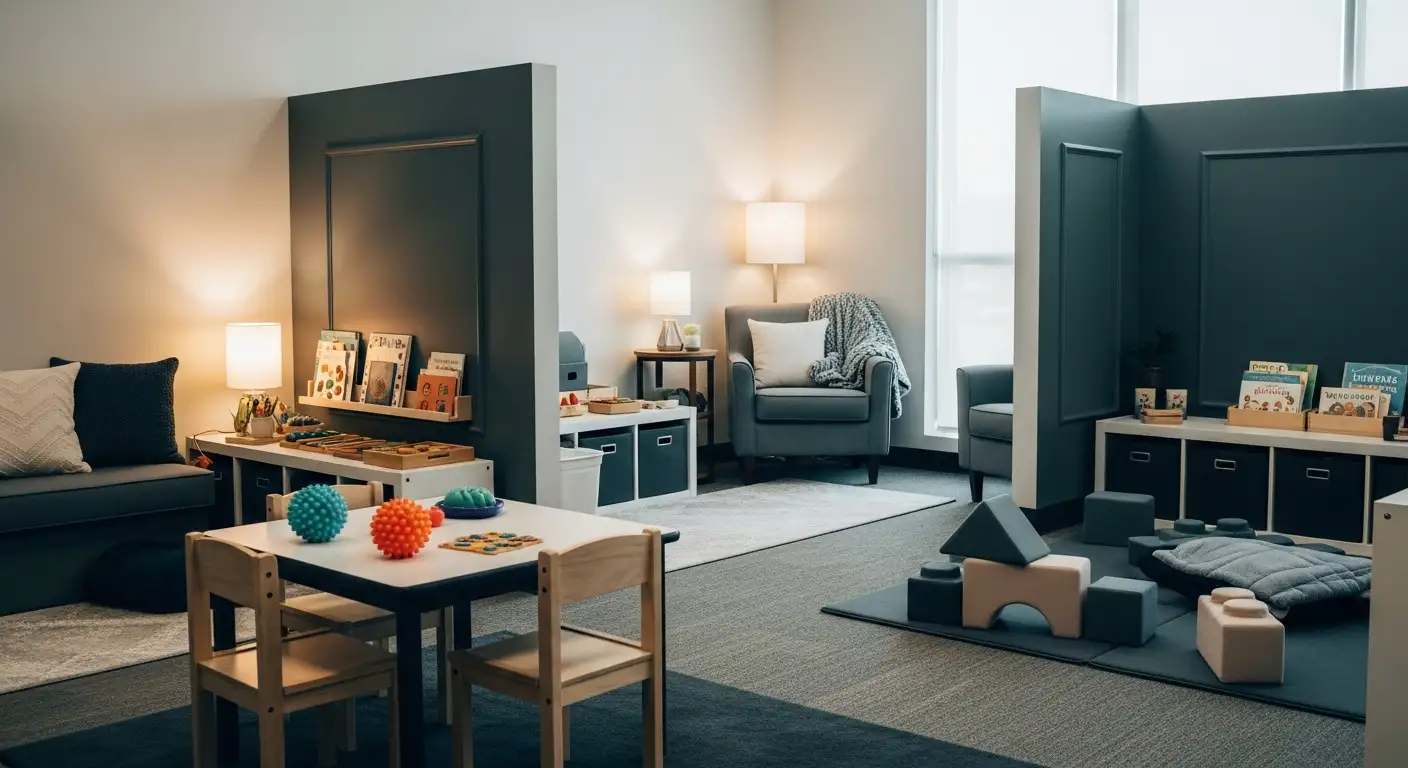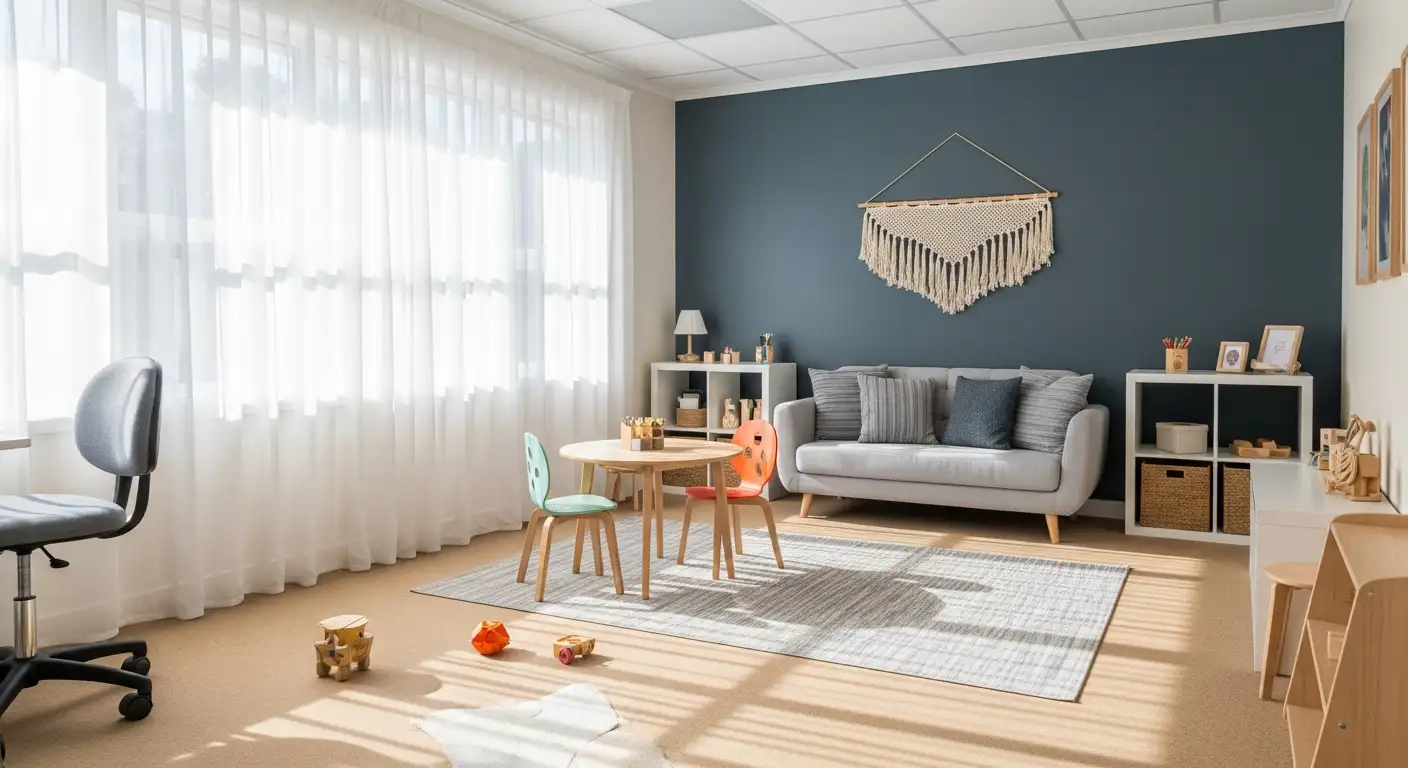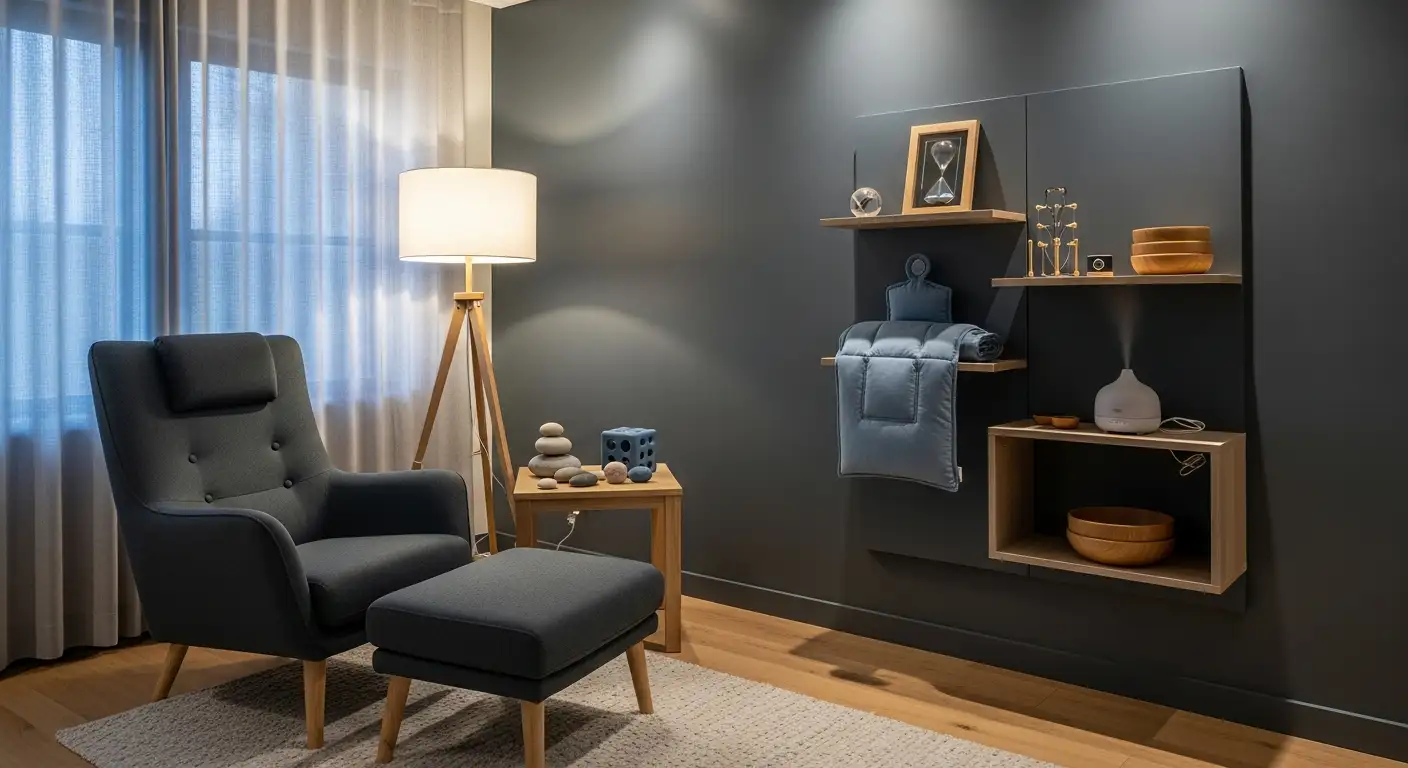Understanding the Sleep Challenges in Autism
Sleep difficulties are a common challenge for children with Autism Spectrum Disorder (ASD), with a significant number experiencing issues ranging from trouble falling asleep to frequent awakenings. These disturbances can exacerbate core symptoms of autism and affect the overall well-being of the child and their family. Applied Behavior Analysis (ABA) therapy offers a structured approach to addressing these challenges through tailored intervention strategies. This article explores how ABA therapy can improve sleep patterns and quality for children with autism.
Why Autistic Children Struggle with Sleep

Why do autistic children have sleep difficulties?
Sleep challenges in autistic children stem from various interconnected factors. One predominant issue is irregular melatonin secretion. Children with autism may have atypical circadian rhythms that lead to difficulty in initiating and maintaining sleep. This disruption can result in long sleep onset latency or difficulty falling asleep.
Another common issue is heightened sensory sensitivities. Autistic children may be more sensitive to light, noise, and even temperature, making it hard for them to relax and fall asleep. These sensory sensitivities can escalate their anxiety levels, contributing to insomnia.
Additionally, many autistic children face increased nighttime awakenings. This often results in shortened overall sleep duration, further exacerbating behavioral issues during the day. Furthermore, behavioral habits learned over time may make it difficult for them to adopt healthier sleep routines.
Creating a conducive sleep environment can significantly help. Simple modifications, such as using blackout curtains to block out light and soundproofing rooms to minimize noise, can enhance their ability to settle down.
How can environmental and biological factors be addressed?
To combat sleep difficulties, it's crucial to establish a calming bedtime routine. This routine can signal to the child that it's time to wind down. Keeping a sleep diary can also help identify specific patterns or triggers affecting sleep quality.
Dietary factors, such as avoiding caffeine, especially in the afternoon, can further support healthy sleep habits. Consulting healthcare professionals for tailored interventions may offer additional support to tackle sleep challenges among autistic children.
Creating Calming Bedtime Routines

Importance of bedtime routines
Establishing a nightly routine is essential for children, particularly those with autism. A consistent bedtime routine helps signal to the child that it’s time to sleep. This predictability creates a sense of security, which is crucial for easing anxiety related to bedtime. ABA therapy encourages structured bedtime practices that can foster better sleep habits in children.
Strategies to help children fall asleep
To effectively support a child with autism in falling asleep, consider these strategies:
- Calming Bedtime Routine: Create a series of passive activities that occur before bed, such as reading a story or listening to soft music. These activities can help wind down and prepare the child for sleep.
- Visual Cues: Using a visual schedule can help children anticipate and understand their bedtime routine, enhancing their ability to transition smoothly into sleep.
- Environment Adjustments: Keep the sleep environment conducive to rest by reducing ambient noise and light exposure. Dimming the lights and maintaining a cool room temperature (between 65° – 67° F) can significantly improve sleep quality.
- Comfortable Sleep Setup: Ensure that the child is comfortable in their pajamas and bedding. Consider using a weighted blanket for added comfort, which can have a calming effect on sensory sensitivities.
- Relaxation Techniques: Teach self-soothing techniques, like deep breathing exercises, to help the child relax before bedtime.
- Bedtime Pass System: Implement a system that allows the child brief exits from their bedroom while reinforcing bedtime boundaries, minimizing unwanted wakefulness.
Incorporating these strategies not only makes bedtime easier but can also improve overall sleep quality, addressing common issues faced by children with autism.
How ABA Therapy Supports Better Sleep

Role of ABA in improving sleep
ABA therapy plays a pivotal role in enhancing sleep quality for children with autism by implementing structured and evidence-based interventions. By first assessing individual sleep behaviors, therapists tailor intervention plans aimed at addressing specific sleep issues.
Children learn to associate their sleep environment with positive experiences through techniques like stimulus control. These methods help in restructuring nighttime behaviors, promoting a relaxing pre-bed routine. For instance, modifying the bedroom environment—such as adjusting light levels and eliminating noisy distractions—can significantly aid in creating a serene atmosphere conducive to sleep.
Through positive reinforcement, children are rewarded for embracing desirable sleep habits. This rewards-based approach encourages them to follow bedtime routines consistently, thus reinforcing their commitment to better sleep.
Behavioral intervention techniques
Several behavioral techniques are essential in ABA therapy to effectively tackle sleep problems.
Here’s a summary of viable strategies:
| Technique | Description | Benefits |
|---|---|---|
| Sleep Hygiene Practices | Establishing routines like dimming lights and limiting screen time before bed. | Promotes relaxation and prepares children for sleep. |
| Sleep Restriction | Adjusting sleep schedules to enhance sleep efficiency. | Helps children fall asleep more easily and stay asleep longer. |
| Caffeine Management | Avoiding caffeine after 4:00 PM. | Prevents sleep disruptions and improves overall sleep quality. |
| Gradual Extinction | Gradually reducing parental intervention at bedtime. | Helps children learn to self-soothe and feel secure in their sleep space. |
| Self-Soothing Techniques | Teaching methods like breathing exercises. | Reduces anxiety related to sleep, aiding smoother transitions. |
| Sleep Logs | Keeping records of sleep patterns and behaviors. | Identifies issues and measures progress for targeted interventions. |
These targeted approaches help children develop healthier sleep behaviors, addressing the significant sleep challenges often faced by those with ASD. By combining behavior modification strategies with parental training, ABA therapy lays a strong foundation for improved sleep health.
ABA Therapy in Home Settings
How can home-based ABA therapy help with sleep issues?
Home-based ABA therapy significantly benefits children dealing with sleep problems by allowing interventions to happen in a familiar and comfortable environment. This setting enhances the effectiveness of the therapy since children are more relaxed and receptive to new behavioral strategies.
Why is the natural environment important?
When therapy takes place at home, ABA therapists can observe the child's interactions and behaviors in context, making it easier to identify sleep-disrupting factors. This method also allows for tailored interventions that best fit the child's routine and environment, enhancing the likelihood of success.
What specific benefits can families experience?
Families can witness several advantages:
- Improved sleep patterns as tailored strategies address specific issues.
- A greater understanding of how daily routines impact sleep.
- Enhanced cooperation from the child due to their comfort in their home setting.
This approach fosters a more collaborative effort between therapists and families, contributing to effective and sustainable changes in sleep habits.
| Benefits of Home-based ABA Therapy | Description | Impact on Sleep |
|---|---|---|
| Familiar Environment | Reduces anxiety associated with unfamiliar settings | Increases receptiveness to interventions |
| Contextual Observations | Allows identification of specific sleep disruptors | Enables targeted strategies |
| Collaboration with Parents | Engages parents in the therapeutic process | Ensures consistency in sleep practices |
| Tailored Interventions | Custom strategies based on unique sleep behaviors | More effective sleep solutions |
By harnessing the benefits of home-based ABA therapy, families can create a supportive framework that promotes healthier sleep patterns for their children.
The Science of Behavior Modification
Understanding Behavior Modification
Behavior modification is a technique used to improve behaviors through reinforcement strategies. In the case of children with autism, it addresses specific issues like sleep disturbances, which significantly impact their well-being.
Children with Autism Spectrum Disorder (ASD) often face unique challenges when it comes to sleep, with estimates suggesting that 50-80% experience issues such as difficulty falling asleep or staying asleep. This complexity necessitates a tailored approach to intervention that considers individual sleep behaviors and environmental factors.
ABA Structured Approach
Applied Behavior Analysis (ABA) is particularly effective in managing sleep-related issues. ABA begins with an assessment of the child’s behaviors to create a customized sleep plan focused on achievable goals. Common strategies include:
- Positive Reinforcement: Rewarding children for consistent sleep habits can enhance motivation and create beneficial sleep routines.
- Visual Schedules: These provide predictability, easing anxiety around bedtime.
- Sleep Logs: Keeping records of sleep patterns helps identify and address specific sleep problems.
Behavior analysts adapt strategies based on ongoing data analysis, ensuring that interventions remain effective and responsive to the child's changing needs.
Addressing Anxiety and Resistance to Sleep

Handling sleep-related anxiety
Sleep-related anxiety can be particularly challenging for children, especially those with autism. Many children experience fear or discomfort when it comes to bedtime. To tackle this, ABA therapy employs strategies that help children feel more at ease. Understanding the specific triggers of sleep-related anxiety is crucial. This allows therapists to create tailored interventions that address individual fears.
Desensitization methods
Desensitization techniques, such as gradual exposure to feared bedtime activities, can prove effective. For instance, if a child is anxious about the dark, starting with dim lights and progressively introducing darker environments can ease their fears. Parents can also utilize calm and reassuring communication to create a safe bedtime atmosphere. By gradually desensitizing the child, therapists enable better tolerance towards bedtime routines, thus improving sleep behaviors.
| Technique | Description | Benefit |
|---|---|---|
| Gradual exposure | Introducing bedtime elements slowly to ease anxiety | Reduces fear and promotes comfort |
| Positive reinforcement | Rewarding calm behavior at bedtime | Encourages consistency in sleep habits |
| Structured bedtime routine | Establishing predictable activities before sleep | Creates a sense of security |
Incorporating Positive Reinforcement
Encouraging Desired Sleep Behaviors
Positive reinforcement plays a crucial role in helping children with autism establish healthy sleep habits. By rewarding desired behaviors around bedtime, children can be motivated to develop routines that promote better sleep. For instance, if a child follows their nighttime schedule without resistance, small rewards such as stickers or extra storytime can enhance their willingness to adhere to the routine.
Reward Systems
Implementing a structured reward system provides children with clear goals. A visual chart can be effective, where a child earns points for each successful night of staying in bed or following the bedtime routine. These points can then be exchanged for a larger reward, like a special toy or a fun activity over the weekend. This method reinforces positive behaviors consistently, encouraging children to view bedtime as a positive experience rather than a struggle.
Collaborating with Healthcare Professionals
Why is Medical Consultation Important?
Engaging healthcare professionals is vital when addressing sleep problems in children with autism. A thorough medical consultation ensures that any underlying medical issues contributing to sleep disturbances are identified and managed effectively.
How to Rule Out Medical Issues
Before implementing ABA strategies for sleep improvement, it's essential to rule out medical causes that might be influencing your child’s sleep patterns. Conditions such as sleep apnea, allergies, or gastrointestinal issues can significantly impact a child's ability to sleep soundly.
Utilizing tools like sleep questionnaires, including the Children’s Sleep Habits Questionnaire (CSHQ), can help healthcare providers assess the situation comprehensively. This detailed evaluation guides the development of a tailored treatment plan.
Are There Medications That Can Help with Sleep Disorders in Children with Autism?
Yes, medications can indeed assist children with autism who struggle with sleep disorders. Common treatments include over-the-counter options and supplements aimed at aiding sleep, such as melatonin, which is frequently recommended for its effectiveness in regulating sleep cycles.
However, it's essential to prioritize nonpharmacological interventions first. Sleep hygiene practices and cognitive behavioral therapy (CBT) are advocated as primary treatment options. Addressing behavioral issues—a significant factor since emotional dysregulation and sensory processing challenges often contribute to sleep disturbances—is crucial.
In children with higher prevalence rates of sleep issues, a comprehensive approach that incorporates both medication and targeted behavioral strategies can lead to better outcomes.
Monitoring and Adjusting Sleep Interventions

Ongoing assessment of sleep patterns
To effectively address sleep issues in children with autism, continuous monitoring of their sleep patterns is essential. With ABA therapy, a thorough assessment begins with tracking sleep behaviors using tools like sleep logs. These logs detail crucial information such as sleep onset times, awakenings, and any associated behaviors that could disrupt sleep.
Regular assessments help identify patterns that inform ABA therapists about effective strategies and necessary adjustments to the intervention plan.
Adapting intervention plans
As children's sleep patterns change or as they grow, it’s vital that the intervention plans are flexible. ABA therapists employ a data-driven approach, making adjustments to customized sleep plans based on collected data. For instance, if a child continues to have difficulties sleeping through the night, therapists may introduce new methods like scheduled awakenings to gradually increase sleep duration.
The adaptability of intervention strategies, along with ongoing observation and parent collaboration, ensures that sleep interventions remain effective and responsive to the child's needs.
The Path to Better Sleep
Through the tailored interventions offered by ABA therapy, children with autism can achieve better sleep, which in turn supports their overall development and daily functioning. While challenges remain, understanding the role of specific strategies and the importance of collaboration with healthcare professionals provides a foundation for addressing sleep difficulties effectively. By fostering consistent sleep routines and managing environmental factors, parents and therapists can work together to improve the quality of life for children on the autism spectrum.
References
- Can't sleep? ABA therapy can help! - The Behavior Exchange
- Home-Based ABA Therapy for Better Sleep for Children with Autism
- Regulating Sleep - Association for Science in Autism Treatment
- Why ABA Therapy is Effective for Addressing Sleep Challenges in ...
- Recommendations for Identifying Sleep Problems and Treatment ...
- Autism and insomnia: Link, treatment, and more - MedicalNewsToday
- Autism and migraine: Link and possible causes - MedicalNewsToday
- Insomnia Severity in Adults with Autism Spectrum Disorder is ...
- Autism: Features, assessment, and support - MedicalNewsToday
- Cognitive Behavioral Therapy for Insomnia (CBT-I): An Overview











